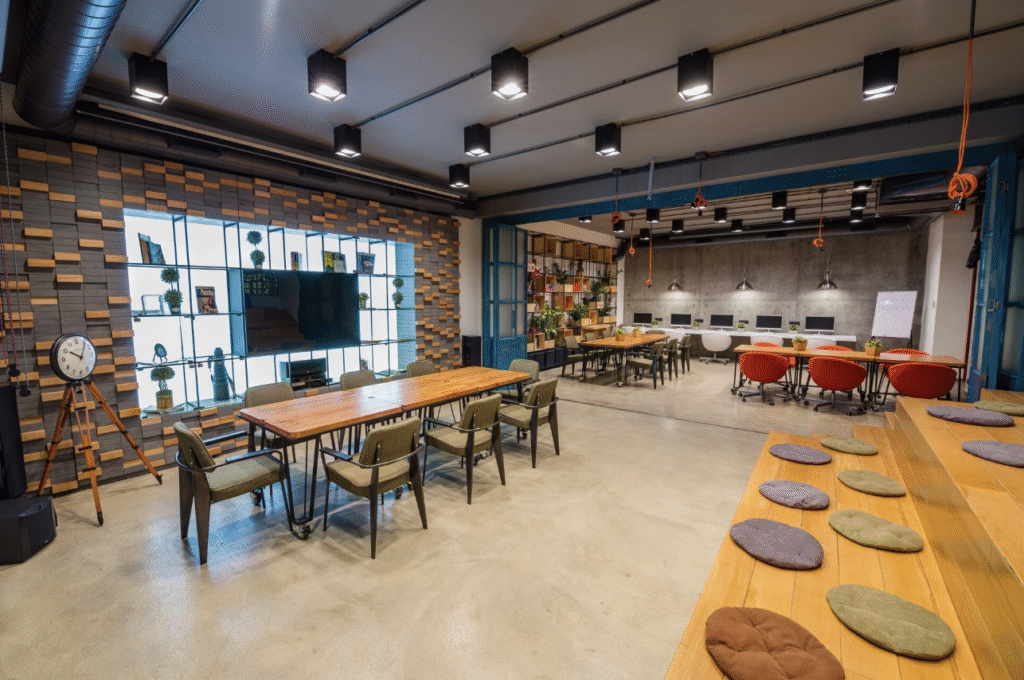What To Prepare Before Renting an Office Space
Finding the right office requires more than just picking a building. Smart preparation can save thousands of dollars and prevent major headaches.
Renting office space is one of the biggest financial decisions a growing business will make. Unlike signing up for software or hiring an employee, an office lease usually locks you in for multiple years. The average small business office lease runs three to five years, and breaking that contract early can cost tens of thousands of dollars in penalties.
Yet many business owners rush into office leases without proper preparation. They fall in love with a space during a quick tour, sign the papers, and then discover problems they should have spotted earlier. Maybe the electrical system cannot handle their equipment. Perhaps the parking situation frustrates employees and clients. Sometimes the rent increases written into the contract make the space unaffordable within two years.
The good news is that proper preparation prevents most of these problems. Knowing exactly what your business needs, understanding lease terms, and having your finances organized makes the search for affordable office space near me much more successful. Business owners who do their homework find better spaces, negotiate better deals, and avoid expensive mistakes.
Calculate Your True Space Needs
The first step happens before you look at any listings. You need to figure out exactly how much space your business actually requires.
Most office space is measured in square feet. Industry standards suggest 100 to 150 square feet per employee for a standard office setup. This includes their desk area plus their share of hallways, conference rooms, break rooms, and storage spaces.
However, your specific needs might differ from these averages. A graphic design firm with large monitors and drawing tables needs more desk space per person. A call center with simple computer stations might need less. Think carefully about your actual daily operations.
Consider Your Growth Plans
Smart business owners plan for growth when choosing office size. If you have five employees today but expect to hire three more within a year, you need space for eight people, not five.
However, paying for empty space costs money every month. Balance your growth plans against your budget. Some businesses start with a slightly smaller space and plan to move again in two or three years. Others pay extra for room to grow and avoid the expense and disruption of moving.
Different Spaces Serve Different Purposes

- Modern offices contain several types of spaces beyond basic desks. Make a list of what you need.
- Private offices work well for managers who take many phone calls or handle confidential information. They cost more per square foot but provide necessary privacy.
- Open desk areas cost less and encourage team communication. Many modern companies use mostly open space with just a few private offices.
- Conference rooms are essential for client meetings and team discussions. Even small businesses need at least one private room for important conversations.
- Break rooms and kitchens keep employees comfortable and productive. These spaces do not need to be large, but they should exist.
- Storage areas often get forgotten during planning. Paper supplies, marketing materials, equipment, and files all need secure storage space.
Understand Your Budget Reality
Knowing exactly how much you can afford prevents wasting time looking at spaces beyond your reach. Office rent works differently than apartment rent, and understanding these differences matters.
How Office Rent Gets Calculated
Most commercial office space quotes rent as an annual price per square foot. If a listing says rent is twenty dollars per square foot and you need 1,000 square feet, the annual rent will be twenty thousand dollars. That equals about 1,667 dollars per month, but you will see it written as the annual figure.
Some landlords quote monthly rent instead, which makes comparison easier. Always ask which method they are using.
Additional Costs Beyond Base Rent
Base rent is just the starting point. Commercial leases usually include several additional costs.
Common area maintenance fees cover cleaning, landscaping, parking lot maintenance, and building repairs. These fees can add three to eight dollars per square foot annually.
Property taxes get passed to tenants in many commercial leases. This cost varies widely by location but can add several dollars per square foot each year.
Insurance costs sometimes fall on tenants. The landlord insures the building itself, but you might pay a portion of that premium.
Utilities might be included in rent or might be separate. Get clear answers about electricity, water, heating, cooling, and internet costs.
When comparing office spaces, always ask for the total cost including all these extras. A space with twenty dollar rent plus eight dollars in additional costs actually costs twenty eight dollars per square foot.
Review Your Financial Documents
Landlords will want to see proof that you can afford the space. Having these documents ready speeds up the process.
Business Financial Statements
Established businesses should prepare recent profit and loss statements showing income and expenses. Balance sheets showing assets and debts help too. Most landlords want to see at least two years of financial history.
Tax returns for the business provide official documentation of income and financial health. Have at least two years of returns ready to share.
Personal Financial Information
Small business owners often need to personally guarantee commercial leases. This means your personal finances matter too.
Personal tax returns show your individual income. Landlords want to see that you have financial stability beyond just the business.
Personal credit reports reveal your history of paying debts. Check your credit score before applying so you know what landlords will see. Scores above 680 are considered good for commercial leases.
Bank statements proving you have cash reserves reassure landlords. Many want to see that you can cover at least six months of rent even if business slows down.
Prepare a Business Plan
New businesses without financial history need strong business plans. This document should explain what your business does, who your customers are, how you make money, and why you will succeed.
Include financial projections showing expected income and expenses for the next three years. Be realistic rather than overly optimistic. Landlords have seen many business plans and can spot unrealistic projections.
Research Locations Carefully
The neighborhood and building where you locate your office affects your business success in many ways.
Think About Your Employees
Workers need convenient access to your office. Locations near public transportation work well in cities. Suburban offices need adequate parking.
The surrounding neighborhood matters for employee satisfaction. Nearby restaurants give lunch options. Coffee shops provide meeting spots. Safe, clean streets make people comfortable.
Consider Your Clients
If customers or clients visit your office, location becomes even more important. Easy to find addresses with clear signage help people arrive on time.
Parking availability matters enormously for client facing businesses. Nothing frustrates visitors more than circling the block looking for parking.
The building’s appearance and neighborhood create impressions. A professional looking building in a thriving business district suggests success and stability. A run down building in a declining area sends different signals.
Check the Competition
Some businesses benefit from being near competitors. Restaurants cluster together because diners go where many options exist. Law firms often locate near courthouses regardless of how many other attorneys work nearby.
Other businesses need distance from competitors. If you provide unique services, being the only option in a neighborhood can attract customers.
Inspect Spaces Thoroughly
When you visit potential office spaces, look beyond the surface. Bring a checklist and take notes.
Test the Basics
Try the light switches and check the electrical outlets. Do you have enough outlets for all your equipment? Are they located conveniently?
Check the heating and cooling. Visit during hot and cold weather if possible. Ask about the system age and who pays for repairs.
Test the cell phone signal. Poor reception in the office frustrates employees and can hurt business.
Measure the actual space. Sometimes rooms look bigger or smaller than they really are. Bring a tape measure and verify the square footage.
Look for Problems
Water stains on ceilings or walls suggest roof leaks or plumbing problems. These issues can disrupt business and cause expensive damage.
Cracks in walls or sloping floors might indicate structural problems. Old buildings sometimes have issues that require expensive repairs.
Strange smells could mean mold, pest problems, or ventilation issues. Your nose can detect problems before they become visible.
Check the bathrooms. Are there enough for your employee count? Do they work properly and look clean?
Ask About Building Policies
Some buildings have rules about signage, business hours, noise levels, or renovations. Get these policies in writing before signing anything.
Find out about building security. Do you get keys or access cards? Is there evening and weekend access? Are there security cameras or guards?
Ask about internet service. Some buildings have exclusive contracts with certain providers. Others let tenants choose their own service.
Understand Lease Terms
Commercial leases are complex legal documents. Reading them carefully prevents unpleasant surprises.
Lease Length Matters
Longer leases usually mean lower monthly costs. Landlords reward commitment with better rates. However, long leases reduce flexibility.
Three to five year leases are most common. One year leases cost more per month but let you move if your needs change.
Some leases include renewal options letting you extend at predetermined rates. These options protect you from large rent increases.
Know Your Responsibilities
Commercial leases come in several types. In a gross lease, the landlord handles most building expenses. In a net lease, tenants pay many costs directly.
A triple net lease makes tenants responsible for taxes, insurance, and maintenance. These leases have lower base rent but higher total costs.
Understand who handles repairs. If the air conditioning breaks, does the landlord fix it or do you? If you want to paint walls or install shelving, do you need permission?
Watch for Hidden Costs
Security deposits for commercial space often equal three to six months of rent. This large upfront cost catches many businesses by surprise.
Some leases include annual rent increases. A three percent increase might sound small, but it adds up over a five year lease.
Early termination penalties can be enormous. If you need to leave before the lease ends, you might owe rent for all remaining months.
Get Professional Help
Commercial leases involve serious legal and financial commitments. Professional advisors prevent costly mistakes.
Real estate agents who specialize in commercial properties know the market and can find spaces you might miss. They often work for free because landlords pay their commission.
Real estate attorneys review leases and spot problematic terms. A few hundred dollars for legal review can save thousands in future problems.
Accountants help calculate true costs and determine how much space you can afford. They also explain tax implications of lease terms.
Making the Final Decision
After all your preparation and research, trust your judgment but verify everything in writing.
Compare your top choices using a simple spreadsheet. List the monthly cost, location benefits, space features, and lease terms for each option. Seeing everything side by side makes the best choice clearer.
Negotiate before signing. Commercial lease terms are rarely fixed. Landlords often negotiate on rent, improvement allowances, and lease length.
Read the entire lease before signing. Never sign a document you have not read completely. Ask questions about anything unclear.
Finally, remember that your first office space probably will not be your forever space. Most growing businesses move every few years. Choose a space that works well for right now and the near future, then plan to reassess as your business evolves.





